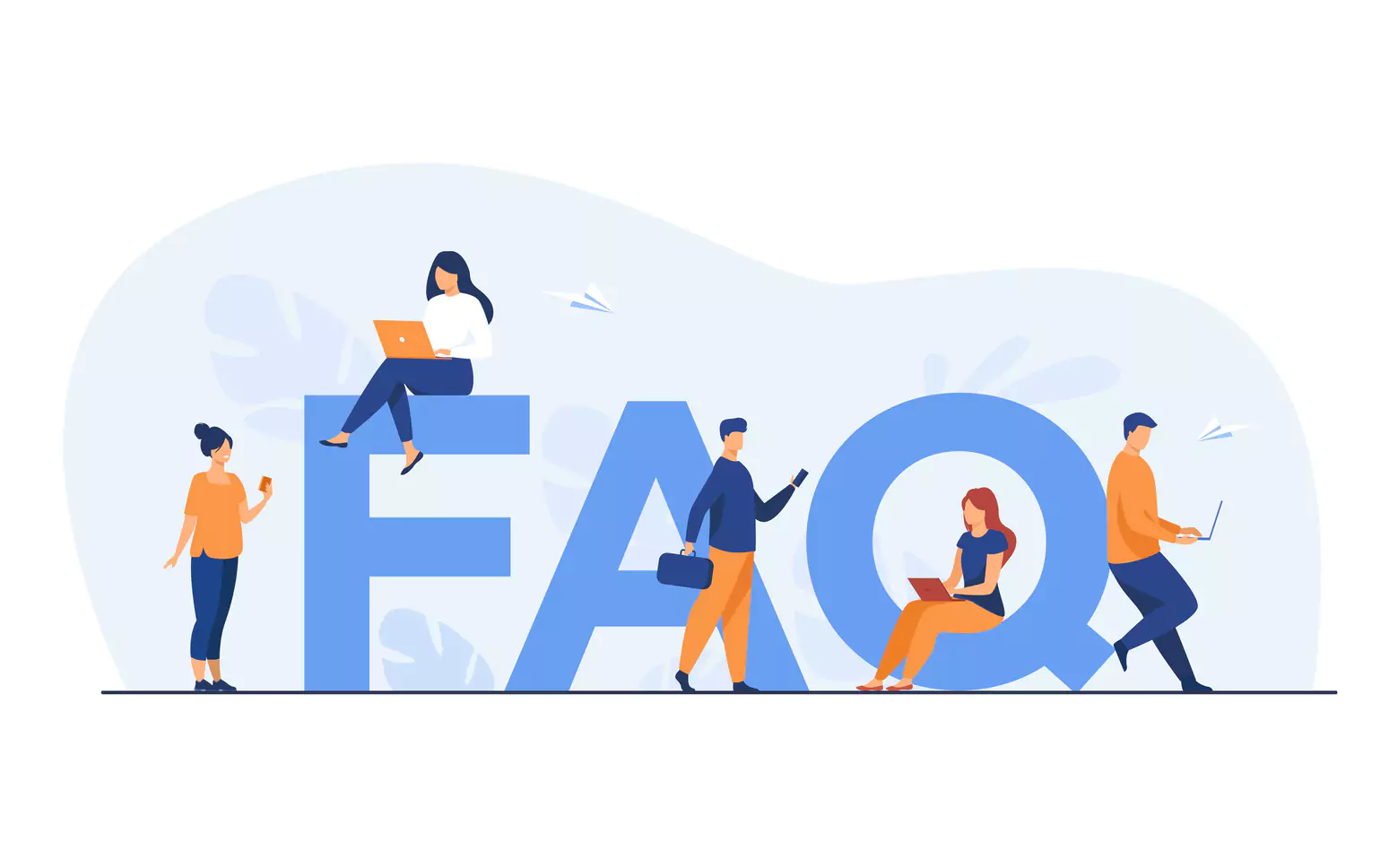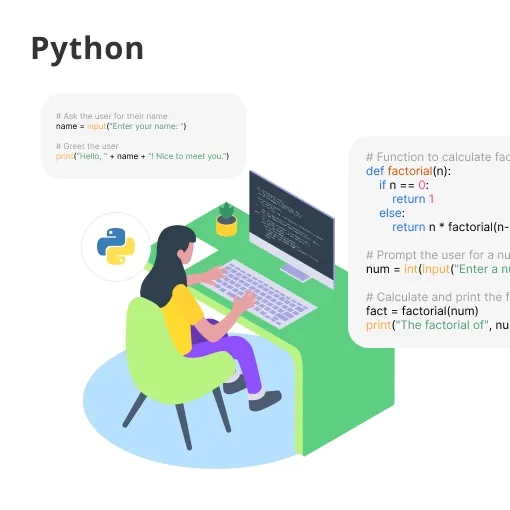What is Python?
Python is a general-purpose programming language that was first released in 1991. It is an open-source language that is easy to learn and read, making it a popular choice among developers.
Why use Python?
Simplicity and Readability
Python's syntax is designed to be easy to understand and write, making it great for beginners. It emphasizes readability, reducing the cost of program maintenance.
Versatility
Python is highly flexible and versatile. It's used in various fields like web development, data science, AI, and more, thanks to its wide range of libraries and frameworks.
Strong Community
Python boasts a robust and active community that continually contributes to its improvement. You'll find numerous resources, guides, and forums to learn from and tackle any issues you encounter.
Speedy Development
The simplicity and clean syntax of Python result in a shorter learning curve and faster development time compared to other programming languages.
Integration Feature
Python can easily integrate with other languages like C, C++, or Java, making it even more potent and flexible.
Who uses Python?
Python is used by individuals, startups, and large companies alike, including Google, Facebook, Instagram, and Dropbox. It is also a popular language for scientific computing and data analysis in academia.
Famous Python Projects
There are several famous projects that have been built using Python, including YouTube, Instagram, and Spotify.
Python in Academia
Python is widely used in academia for scientific computing and data analysis, with several libraries and frameworks available for these purposes.
Where can Python be used?
Web Programming
Python simplifies the web development process with frameworks like Django and Flask. These frameworks allow swift development of secure, scalable websites with less code, making Python a popular choice.
Scientific Computing
Python, with libraries like NumPy, Matplotlib, and SciPy, has become a powerful tool in scientific computing. Researchers and data analysts use it for data analysis, visualization, and calculations in fields like physics, astronomy, and bioinformatics.
Artificial Intelligence and Machine Learning
Python is the language of choice for AI and Machine Learning. Libraries such as TensorFlow, PyTorch, and Scikit-Learn provide tools for the creation of machine learning models, neural networks, natural language processing, and more.
Game Development
Python's Pygame module allows for the creation of interactive games. Although Python might not be as popular as C++ for game development, it works well for beginners and prototyping.
Data Science and Big Data
Python's simplicity and robustness make it a go-to for data scientists. Libraries like Pandas, Matplotlib, and Seaborn help in data manipulation, analysis, and visualization, while PySpark is useful for handling big data.
Automation and Scripting
Python's readability and simplicity make it ideal for automation scripts and rapid application development. From small tasks like moving files between directories to automating complex tasks on servers, Python's utility in automation and scripting is unmatched.
When was Python created?
Python was created in the late 1980s by Guido van Rossum, a Dutch programmer. The first version of Python, version 0.9.0, was released in 1991.
Versions of Python
There are currently two major versions of Python in use, Python 2 and Python 3, with Python 2 being phased out in favor of Python 3.
How does Python work?
Interpreted Language
Python is an interpreted language. Instead of compiling code to a machine language before execution, Python code is translated at runtime, line by line, making debugging easier.
Object-Oriented Programming
Python fully supports object-oriented programming (OOP). This model organizes code into classes and objects, simplifying complex problem-solving and making code easier to manage and extend.
Dynamic Typing
Python is dynamically typed, meaning variable names aren't tied to a specific data type. Developers assign values to variable names without declaring their type, providing more coding freedom.
Indentation Syntax
Uniquely, Python relies on whitespace indentation to define blocks of code. This enforces readability and consistency in coding style, which are core principles in Python’s philosophy.
Built-In Libraries and Modules
Python comes with a broad range of libraries and modules, containing predefined functions and methods. This "batteries-included" feature boosts productivity by reducing the amount of custom code that needs to be written.
The Global Interpreter Lock
Python uses a Global Interpreter Lock (GIL) to manage memory access in multi-threaded programs. While its usage is occasionally criticized, the GIL helps maintain Python's simplicity and ease-of-use.
Python Syntax
Python has a simple and easy-to-learn syntax that makes it a popular choice for beginners and experienced developers alike.
Indentation
Python uses indentation to indicate blocks of code, rather than curly braces or other delimiters.
Comments
Python allows developers to add comments to their code using the "#" symbol.
Variables
Variables in Python do not need to be declared before they are used, and their data type is inferred from the value assigned to them.
Operators
Python has several operators, including arithmetic, comparison, and logical operators.
Python Libraries and Frameworks
Data Analysis - Pandas
Pandas is a powerful Python library for data manipulation and analysis. You can organize, filter, and transform data using easy-to-understand functions and methods.
Machine Learning - Scikit-Learn
Scikit-Learn is a robust machine learning library in Python. It provides a range of supervised and unsupervised learning algorithms and tools for model fitting, data preprocessing, model selection, and evaluation.
Web Development - Django
Django is a Python framework known for its "batteries-included" philosophy. It follows the Model-View-Template (MVT) architectural pattern and includes features to help developers build secure, scalable websites with less effort and time.
Scientific Computing - NumPy
NumPy, short for Numerical Python, is a library for large, multi-dimensional arrays and matrices, along with mathematical functions to operate on these arrays. It's widely used in scientific computing.
Data Visualization - Matplotlib
Matplotlib is a Python data visualization library, allowing the creation of static, animated, and interactive plots in Python. Data scientists use it to understand data patterns and trends visually.
Deep Learning - TensorFlow
Developed by the Google Brain team, TensorFlow is a Python library that provides a range of tools for designing, building, and training deep learning models.
Python in Data Science
Great to see you're interested in Python for data science! Let's delve into why Python is a preferred choice in this field.
Vibrant Libraries
Python boasts a rich ecosystem of libraries designed for data science tasks, like NumPy for numerical operations, Pandas for data manipulation, Matplotlib for visualization, and Scikit-learn for machine learning.
Easy to Learn
Thanks to its clean syntax, Python is considered one of the easiest programming languages to learn. This makes it a popular choice among budding data scientists.
Data Wrangling
Python excels at cleaning, transforming, and enriching raw data, a vital process in data science known as data wrangling, making the data more suitable for analysis.
Support for Advanced Data Analytics
Python offers excellent support for implementing advanced data analytics techniques including machine learning, natural language processing, and more, making predictive analysis more accessible.
Active Community
Python has a robust, supportive community, offering a wealth of resources, modules, and tools for data science, ensuring data scientists always have the help they need.
Python in Artificial Intelligence
Python is a popular language for artificial intelligence and machine learning due to its ease of use and the availability of many libraries and frameworks.
TensorFlow
TensorFlow is a popular library for machine learning and artificial intelligence. It provides support for building and training neural networks.
Keras
Keras is a high-level neural networks API that is built on top of TensorFlow. It provides a simple and easy-to-use interface for building and training neural networks.
PyTorch
PyTorch is a library for machine learning and artificial intelligence that is often used for building and training neural networks.
Tl;DR
Python is a versatile and widely used programming language that is easy to learn and read. Its large and active community of developers has created many libraries and frameworks that can be used for different purposes, making it a popular choice for a wide range of applications, including web development, data analysis, and artificial intelligence.
Frequently Asked Questions

What is Python?
Python is a high-level, interpreted programming language. It's known for readability, simplicity, and versatility, making it great for beginners and experts alike.
Why is Python called 'Python'?
Python is named after Monty Python's Flying Circus, a British comedy group. Guido van Rossum, Python's creator, wanted a name that was short, unique, and slightly mysterious.
How is Python used in real-world applications?
Python's versatility allows it to be used for various real-world applications, including web development, data analysis, machine learning, artificial intelligence, scientific computing, and more.
Is Python a good language for beginners?
Absolutely! Python has a simple syntax, which makes it an excellent language for beginners to start learning programming.
How popular is Python?
Python is one of the most popular programming languages in the world. It's frequently used by big names like Google, NASA, and Spotify for a wide range of applications.

